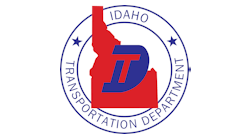Greater Idaho Falls Transit launches after-hour services for its On-demand service
The Greater Idaho Falls Transit (GIFT) On-demand service began offering after-hours service July 27. GIFT will now provide rides from 6 a.m. to 11 p.m. on Thursday and Friday and from 7 a.m. to 11 p.m. on Saturday. The fare for the after-hours service (9 p.m. to 11 p.m.) is $10 per ride. The discounted fares do not apply to the after-hours service.
The regular hours of operation will remain the same on Monday, Tuesday and Wednesday from 7 a.m. to 9 p.m., when the demand for the service tapers back down. The cost for a ride during regular hours remains at $4 per ride, less for federally-recognized seniors and those with disabilities.
While the phone center hours will not change, users can easily schedule a ride using the GIFT On-demand app or by calling the phone center in advance. The app is available for download on the Apple App Store or Google Play.
GIFT is a ride-share service in which passengers travel together in the same direction in a vehicle driven by a rideshare provider for a fee. Idaho Falls began providing the service within city limits in June of 2022 and has provided a total of 100,000 rides since that time.
The ride share pilot program is funded federally through a $4.2 million grant from the Federal Transportation Administration and the Idaho Transportation Department (ITD). ITD reimburses the city of Idaho Falls for the cost of managing the transit service for two years. Surrounding cities have the option to invest in GIFT and participate in the service if they choose to do so after the two-year pilot program.
“We are closely tracking data and feedback from our customers and making decisions based on several factors,” said GIFT Transit Coordinator Kade Marquez. Thanks to the tremendous amount of support and feedback from the community, we’re able to extend our evening service by a couple of hours a few days a week to better serve our customers’ needs. Our hours of operation and fares will continue to evolve as the demand for service changes and the funding sources shift following the two-year pilot program."




